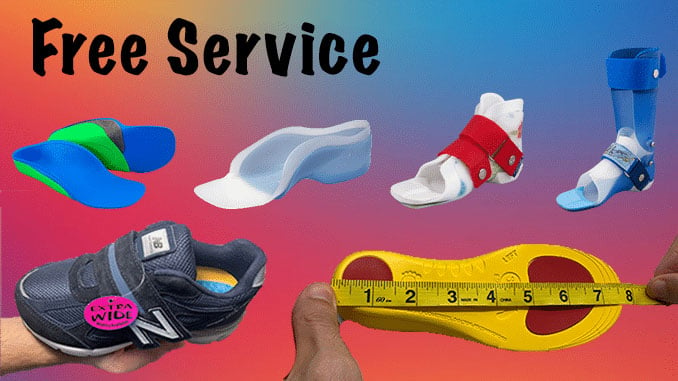Find Out Why Children Who Wear Orthotics Must Wear Supportive Shoes
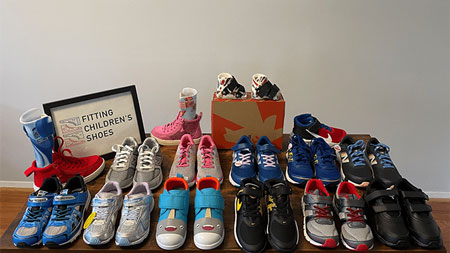
Has your child been diagnosed with a foot condition that requires him or her to wear orthotics? Does your child prefer to wear fashionable shoes but you are worried that they won’t properly support your child’s feet? I have seen several families make the common mistake of assuming that they don’t have to worry about the types of shoes their child wears simply because they are getting all the support they need from the orthotics. The shoes and the orthotics that you buy for your child work together to help treat your child’s foot conditions. I am going to show you a list of what shoes work well with orthotics and what shoes you should avoid.
Did you know that your child won’t get the full support and stability that orthotics have to offer if you buy your child the wrong pair of shoes? For example, I have noticed how most families allow their children to wear their orthotics in unsupportive shoes such as Vans, Converse, Nike, or Under Armour. While these are all well-known shoe brands, they manufacture shoes that are more fashionable than functional.
Why Do I Need Supportive Shoes If the Orthotics Provide Good Support?
Shoes should provide a stable base of support to hold the orthotic in place and support your child’s feet at the same time. Take a look at the image below for better visualization purposes:
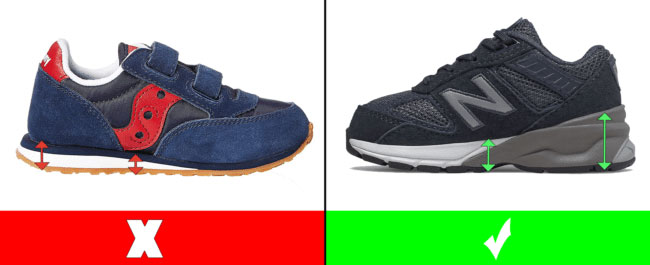
A lot of families associate supportive shoes with heavy shoes. I have fitted several different supportive shoes and none of them were extra heavy. The shoes need to be supportive but lightweight and flexible at the same time. What I mean is that your kids’ shoes should bend at the toes but not further. If you can flex your kids’ shoes as a spiral then it is probably best if you move onto the next pair of shoes:
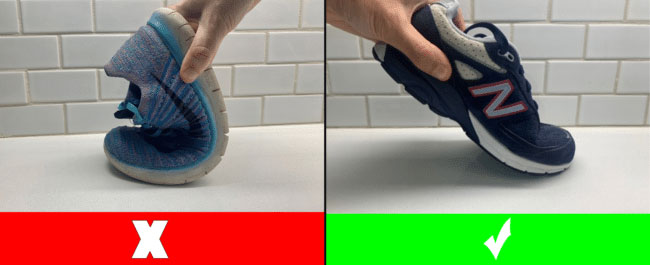
In addition to providing your child with supportive shoes, the shoes need to fit the shape of your child’s feet and orthotics correctly. I have seen how many families simply increase the shoes they normally buy by two or more sizes, which can defeat the whole purpose of investing your time and money in an orthotic. One of the most common reasons why children wear orthotics is to improve their walking gait and stability. However, if you provide your child with shoes that are way too big, you’re stealing that stability right back.
Many physical and occupational therapists refer children to the shoe store that I work for to be properly fitted for shoes, and depending on the degree of the child’s foot condition, orthotics as well. I am familiar with fitting children in custom and over-the-counter orthotics. These are all of the types of insoles/orthotics that I have fitted throughout the years:
- Pattibob
- Chipmunks
- Superfeet
- AFOs
- SMOs
- Crickets
- Footlogics
- Carbon fiber footplates
- Leapfrogs
Don’t Pair Orthotics with Converse, Vans, Nike, and Under Armour
I have seen hundreds of children who ask for these popular shoe brands to wear with their orthotics. I understand that children should be able to wear the shoes that they like, but you will soon notice that those shoes don’t work well with orthotics.
They basically lack support and they are too narrow and shallow to accommodate the extra space that orthotics take inside the shoes. For example, I fitted a full-length orthotic in the Nike shoe below. Do you notice how the orthotic is not sitting properly inside the shoes? The orthotic is raised because the shoes don’t provide extra depth:

This is how the orthotic is supposed to fit inside the shoe. Do you notice how the orthotic is sitting a lot deeper inside the shoe below?
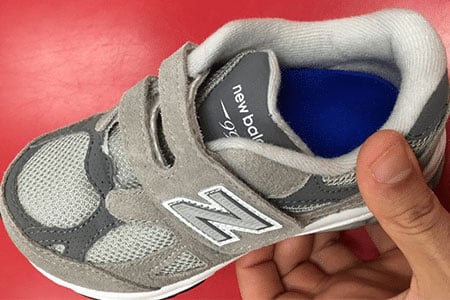
What Shoes Work Best with Orthotics?
I suggest that you take a look at the following below to access a selection of the best shoes for children who wear full-length orthotics or AFOs.
Both of the resources above were created by me based on my many years of shoe fitting experience.
Are All Orthotics the Same?
The short answer is no. Some orthotics are a lot harder to fit inside the shoes as they might take more volume and space. For example, AFOs and SMOs take a lot more space than any other full-length or 3/4 length orthotic. Take a look at the image below, the footplate of the AFO is very thick and you also need to consider that the back part of the AFO will require a shoe with extra depth:

Important Tip #1: Shoes with laces are more effective for children who wear orthotics compared to shoes with velcro closure. It’s important that the laces of the shoes or the velcro straps are pulled tightly to help keep the orthotic in place and also help improve the child’s stability.
Important Tip #2: If your child wears full length orthotics or AFOs/SMOs it’s important that you remove the original insoles of the shoes to make extra space for the orthotics.
Let me know in the comment section below if you are unsure whether your child is wearing the correct types of shoes with his/her orthotics. You can also contact me directly via email:


